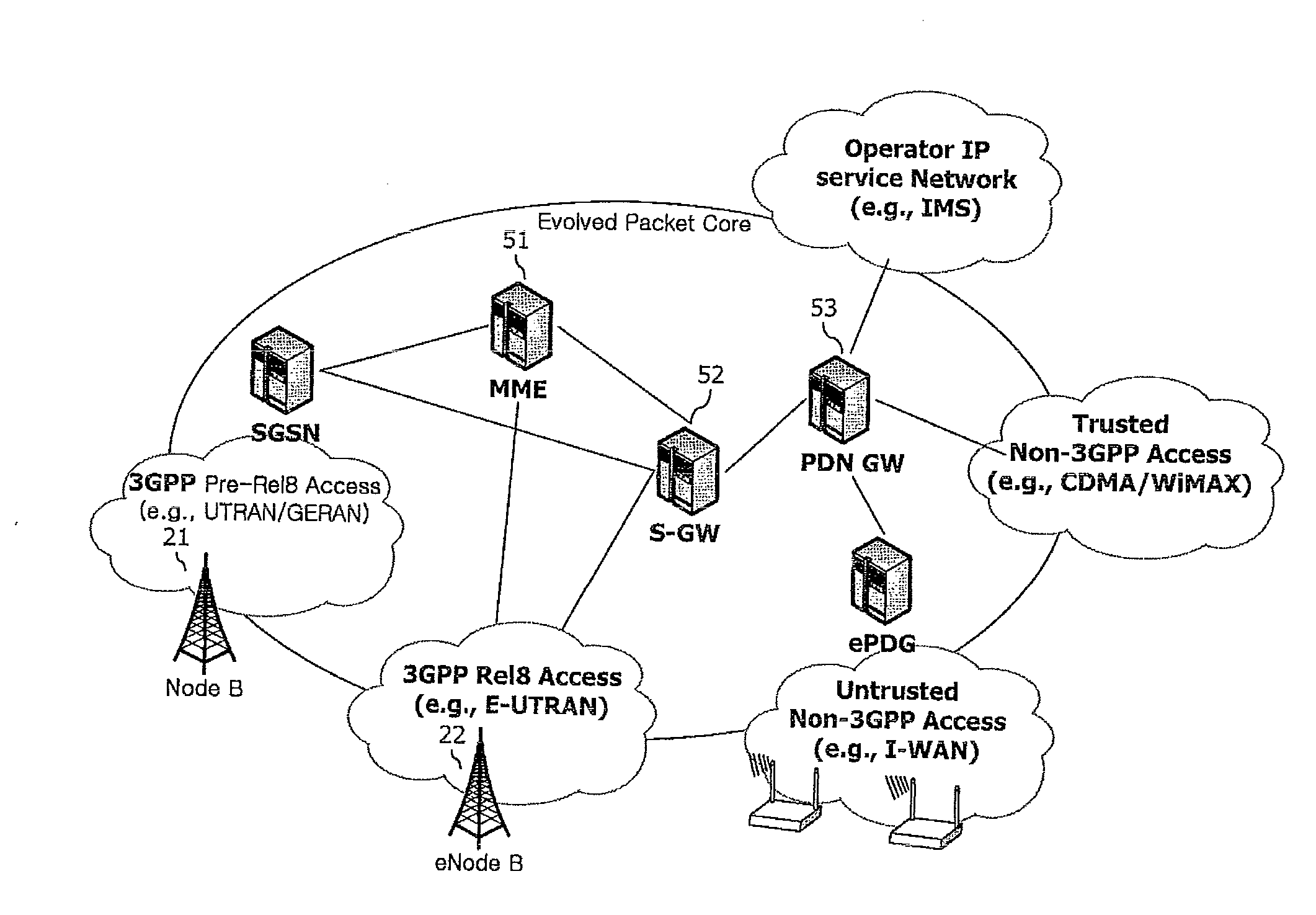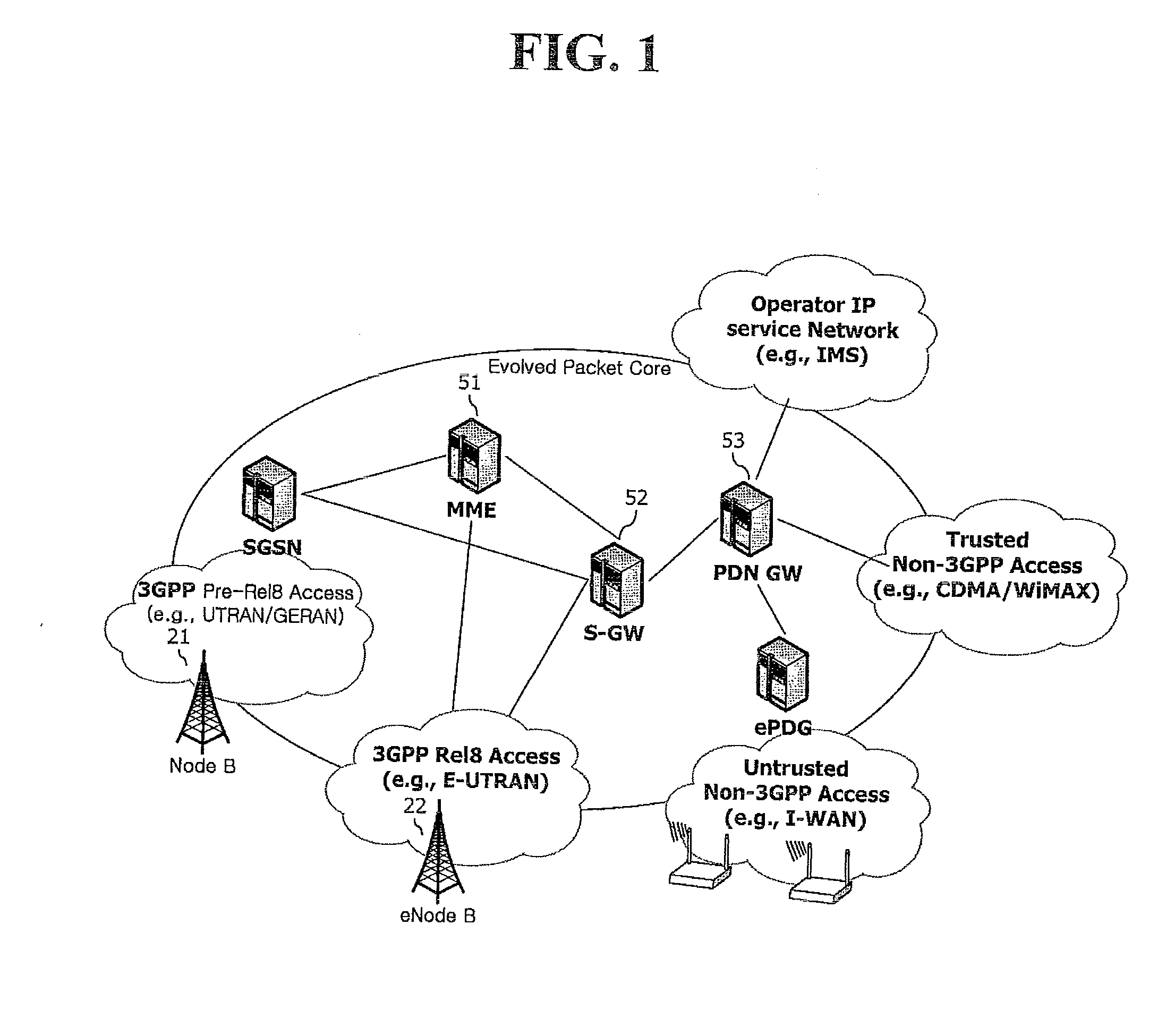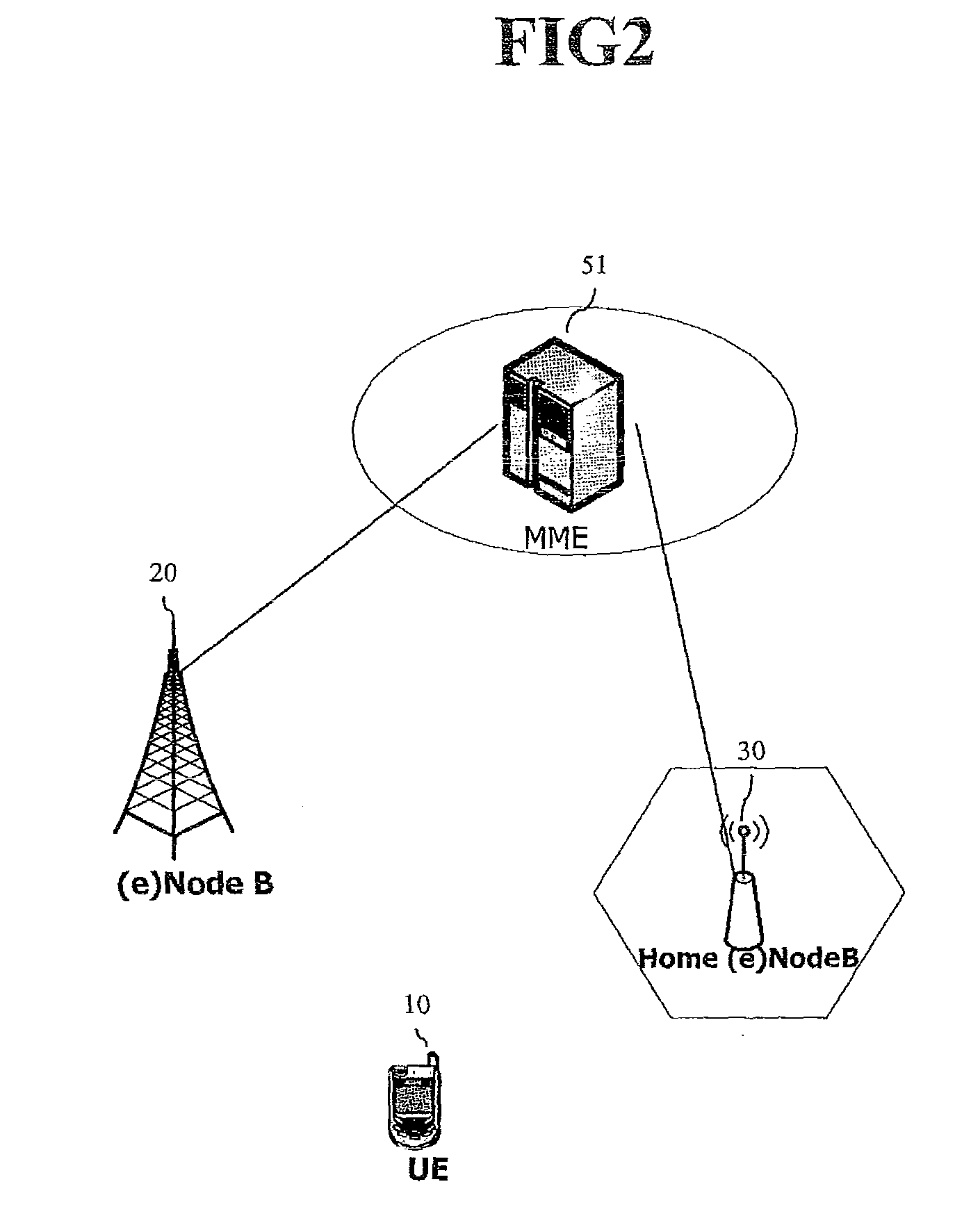Method for controlling access of terminal to home (e)nodeb
- Summary
- Abstract
- Description
- Claims
- Application Information
AI Technical Summary
Benefits of technology
Problems solved by technology
Method used
Image
Examples
first embodiment
[0098]FIG. 4 is a flowchart showing a method for controlling access in a Home (e)NodeB operated in a closed access mode according to the present invention.
[0099]FIG. 4 shows a UE 100, a Home (e)NodeB (e.g., femto-base station), a core network (CN) 500, and a target cell 200.
[0100]The core network 500 may include a Mobility Management Entity (MME), a serving GPRS support node (SGSN), a Mobile-services Switching Centre (MSC), a Home Subscriber Server (HSS), a Home Location Register (HLR), a User Repository, etc. The target cell 200 may be a femto-base station such as the Home (e)NodeB 300, or a macro-base station such as an (e)NodeB.
[0101]According to the first embodiment of the present invention, if accessible time (or allowed time) of the current membership of the terminal to a current (or specific) CSG ID of the Home (e)NodeB 300 has expired while the UE 100 is receiving a service from the Home (e)NodeB 300, the Home (e)NodeB 300 compares a CSG ID list stored therein with an allowe...
second embodiment
[0109]FIG. 5 is a flowchart showing a method for controlling access in a Home (e)NodeB operated in a closed access mode according to the present invention.
[0110]According to the second embodiment, the allowed CSG ID list of the UE 100 may be also stored in the core network 500. Accordingly, the Home (e)NodeB 300 acquires the allowed CSG ID list of the UE by request from the core network 500, and then compares the allowed CSG ID list of the UE with its CSG ID list.
[0111]This will be explained in more detail with reference to FIG. 5.
[0112]1) While the Home (e)NodeB 300 provides service to the UE 100, the Home (e)NodeB 300 recognizes that a timer for for a membership of the UE 100 to a specific CSG ID (current CSG ID) of the Home (e)NodeB(e.g., a CSG timer) has expired (S210). The timer may be operated by the Home (e)NodeB 300, or by an external entity (e.g., a specific entity of the core network 500). In the case that the timer is operated by a specific entity of the core network 500,...
third embodiment
[0118]FIG. 6 is a flowchart showing a method for controlling access in a Home (e)NodeB operated in a closed access mode according to the present invention.
[0119]According to the third embodiment, the allowed CSG ID list of the UE 100 and the CSG ID list of the Home (e)NodeB 300 may be also stored in the core network 500. The third embodiment is different form the first and second embodiments in that a specific entity of the core network 500 directly determines whether to change the CSG ID.
[0120]This will be explained in more detail with reference to FIG. 5.
[0121]1) While the Home (e)NodeB 300 provides service to the UE 100, a specific entity of the core network 500 recognizes that a timer for a membership of the UE 100 to a specific CSG ID (or current CSG ID) of the Home (e)NodeB 300 (e.g., a CSG timer) has expired (S310). The timer may be operated by the Home (e)NodeB 300, or by other entity of the core network 500. Here, the specific entity of the core network 500 acquires informa...
PUM
 Login to View More
Login to View More Abstract
Description
Claims
Application Information
 Login to View More
Login to View More - R&D
- Intellectual Property
- Life Sciences
- Materials
- Tech Scout
- Unparalleled Data Quality
- Higher Quality Content
- 60% Fewer Hallucinations
Browse by: Latest US Patents, China's latest patents, Technical Efficacy Thesaurus, Application Domain, Technology Topic, Popular Technical Reports.
© 2025 PatSnap. All rights reserved.Legal|Privacy policy|Modern Slavery Act Transparency Statement|Sitemap|About US| Contact US: help@patsnap.com



